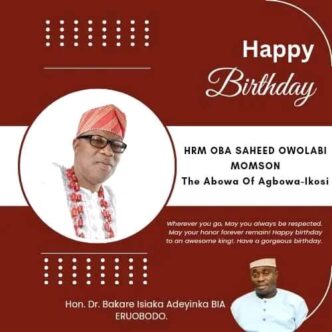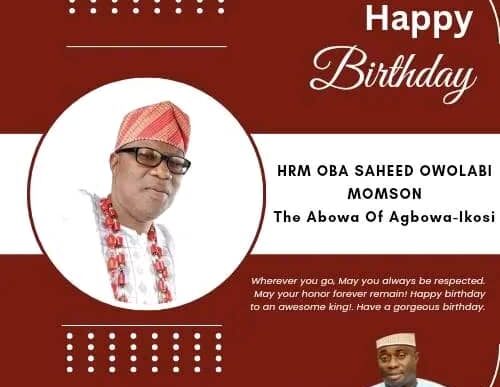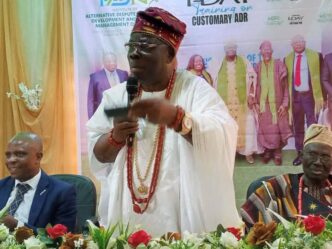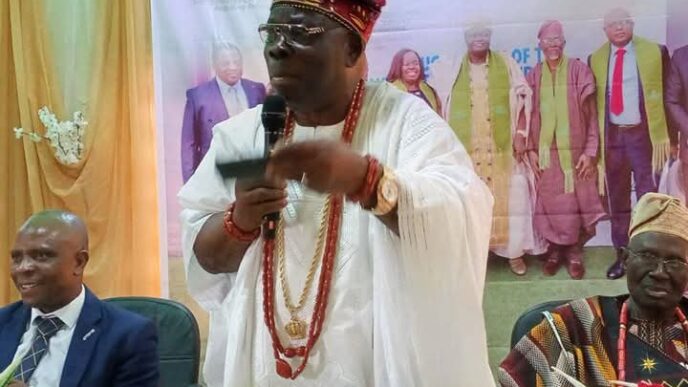The name King Kosoko resonates deeply in the annals of Yoruba history and particularly in the heart of Epe Kingdom. His journey to Epe in 1851 marks a pivotal moment that shaped the cultural, political, and social identity of this coastal community.
EpeInsights reports that today, more than 170 years later, the legacy of King Kosoko lives on, not only through traditions such as the annual Etufu torch lighting but also through significant landmarks and stories that continue to inspire pride and unity among the people of Epe.
This special report delves into the historic odyssey of King Kosoko to Epe, the landmarks he established and the cultural heritage he forged that remains vibrant to this day.
Before his arrival in Epe, Kosoko was a prominent Yoruba monarch from Lagos, involved in complex political struggles that led to his exile.
After a turbulent reign and conflicts with the British colonial forces, Kosoko sought refuge and a new beginning in Epe, a serene town along Nigeria’s Lagos Lagoon.
His arrival in Epe was not just a migration; it was the transplantation of royal authority and tradition that would forever change the town’s destiny.
Historical accounts describe Kosoko’s journey as fraught with challenges, reflecting the turbulent period of 19th-century Yoruba politics. Navigating through hostile territories, threats of war, and the uncertainties of exile, Kosoko’s arrival in Epe was both an act of survival and a strategic move to establish a new seat of power.
Upon settling in Epe, Kosoko brought with him his loyal followers, royal regalia, and a determination to embed his legacy in the new land.
Landmarks of King Kosoko in Epe
1. The Etufu Torch Tradition
One of the most enduring symbols of Kosoko’s legacy is the Etufu torch lighting ceremony. This ritual commemorates Kosoko’s arrival and journey, symbolizing light overcoming darkness and the beginning of a new era for Epe.
Every year during the Kayokayo Festival, the Kosoko Royal Family lights the seventh and final Etufu torch, a powerful reminder of their ancestral roots and the unity of the kingdom.
2. Kosoko’s Palace in Epe
Though the original structures have undergone changes over time, the site of Kosoko’s palace in Epe remains a sacred landmark.
It serves as the spiritual and administrative center for the Kosoko Royal Family, embodying the monarchy’s continued influence.
The palace is also a repository of artifacts, royal drums, and ceremonial items that narrate the kingdom’s rich past.
3. The Kosoko Shrine
Dedicated to the spiritual well-being of the kingdom and the royal lineage, the Kosoko Shrine is a vital cultural site in Epe.
It is where traditional rites and prayers are conducted, especially during festivals and royal events, linking the people to their ancestors and divine protection.
4. Epe Town Walls and Gateways
Under Kosoko’s reign, fortifications and symbolic gateways were established to protect the town and assert royal authority. These walls and gates stand today as historical landmarks, testifying to a period of consolidation and growth for Epe.
King Kosoko’s Impact on Epe’s Culture and Governance
Kosoko’s leadership introduced structured governance models and helped unify various quarters of Epe under one kingdom. His influence extended beyond politics to cultural patronage, encouraging traditional arts, festivals and community values that foster social cohesion.
The Kayokayo Festival, which features the Etufu lighting and other rituals, is a direct cultural inheritance from his reign celebrating history, unity and the enduring spirit of Epe.
King Kosoko’s journey to Epe is far more than a historical migration; it is a foundational chapter that shaped a kingdom’s identity and spirit. The landmarks he established, the traditions he birthed, and the legacy he left behind continue to define Epe’s cultural landscape.
As Epe embraces the future, the memory of King Kosoko and his journey serves as a beacon—reminding all that history, heritage, and unity are pillars upon which communities thrive.
The Modern-Day Legacy: Kosoko Royal Family’s Role Today
The Kosoko Royal Family remains the custodian of this rich heritage. Under the stewardship of leaders like Oba Abiola Kosoko, they continue to promote cultural education, community development and preservation of historical sites.
The family’s involvement in contemporary events like the Kayokayo Festival ensures that King Kosoko’s journey is not forgotten but remains a living narrative inspiring future generations.
The Kosoko dynasty, steeped in history and tradition, has long been central to the cultural heartbeat of Epe Kingdom. Today, this legacy thrives under the leadership of Oba Abiola Kosoko, the current Oloja of Epe, who embodies both the heritage of his forebears and the aspirations of a modern community.
Oba Abiola Kosoko’s journey to kingship is marked by dedication to community service, cultural preservation, and leadership within the Epe royal family. Raised within the royal household, he was deeply immersed in the traditions, ceremonies, and governance systems that define the Kosoko lineage.
His early involvement in local affairs and active participation in cultural festivals positioned him as a natural successor. Recognized for his wisdom, humility, and commitment to unity, Abiola Kosoko was crowned Oloja Epe following the passing of his predecessor, amidst widespread community support.
Oba Abiola Kosoko’s coronation was not merely a ceremonial affair but a profound reaffirmation of Epe’s cultural identity. The event brought together chiefs, dignitaries, and thousands of residents in a celebration that blended ancient rites with contemporary pomp.
The crowning underscored the continuity of the Kosoko dynasty, linking the present-day kingdom directly to King Kosoko’s historic arrival and reign. It also symbolized hope for renewed progress and strengthened unity within the Epe community.
Since ascending the throne, Oba Abiola Kosoko has become a unifying figure, balancing tradition with modern governance challenges. His leadership emphasizes:
-
Cultural Revival: Leading initiatives like the Kayokayo Festival, ensuring that traditions such as the Etufu torch lighting remain vibrant and relevant.
-
Community Development: Advocating for infrastructure improvements, education, and healthcare to uplift the standard of living in Epe.
-
Peace and Unity: Mediating disputes and fostering harmony among the various quarters and families within the kingdom.
-
Youth Engagement: Encouraging youth participation in cultural events and leadership programs to nurture future custodians of Epe’s heritage.
Oba Abiola Kosoko is widely respected for his ability to navigate the complexities of modern Nigerian society while steadfastly preserving Epe’s unique cultural identity. His speeches often highlight the importance of remembering history as a foundation for progress.
During recent Kayokayo festivals, his messages consistently remind residents that their strength lies in unity, cultural pride, and a shared vision for a prosperous Epe.
Perhaps what endears Oba Abiola Kosoko most to his people is his accessibility and genuine care. He is known to actively engage with community members, listen to their concerns, and champion their welfare both within traditional settings and governmental forums.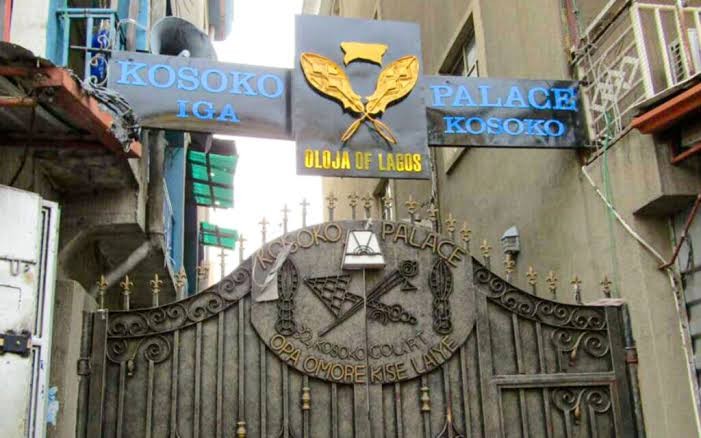
His leadership style reflects the spirit of King Kosoko himself; resilient, wise and committed to the prosperity of Epe.
Oba Abiola Kosoko stands as a beacon of continuity and renewal for the Kosoko dynasty and Epe Kingdom. His emergence as the current Oloja represents the living bridge between a rich past and a promising future, ensuring that King Kosoko’s legacy not only survives but thrives in contemporary times.
Under his stewardship, Epe is poised to remain a cultural jewel on Nigeria’s map, where tradition and progress walk hand in hand.





